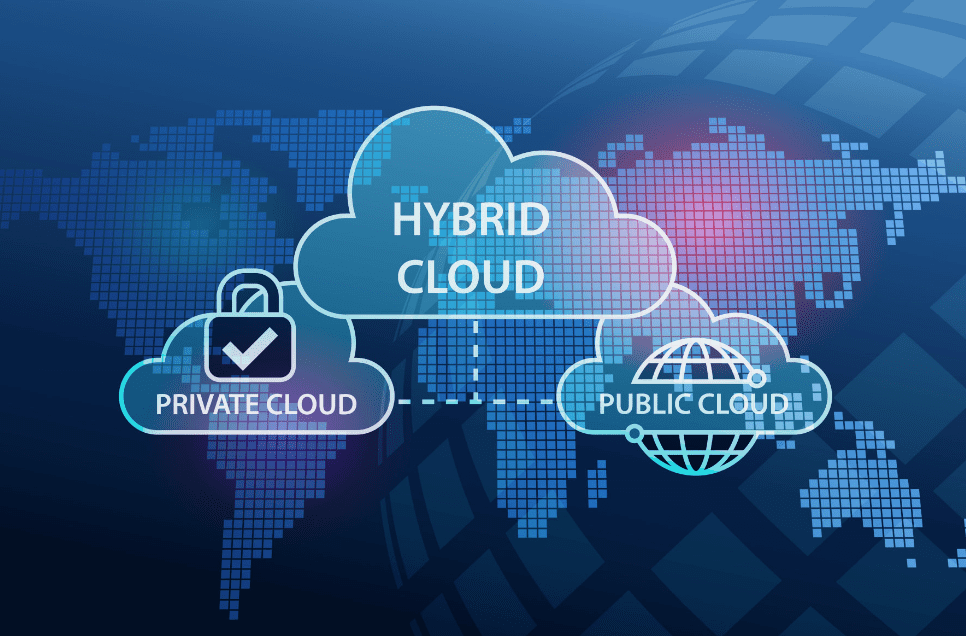Managing costs in a hybrid cloud setup can be complex, as it involves balancing both public and private cloud environments.
While hybrid clouds offer the flexibility and scalability that your business needs, they can also lead to unexpected expenses if not properly managed.
There are strategic approaches you can implement to keep your costs under control, from optimizing resource usage to taking advantage of cost-saving tools.
This post offers ten essential tips to help you reduce your hybrid cloud expenses and boost your return on investment.
1. Determine workload placement
The first step in optimizing cloud costs with a hybrid strategy is identifying which workloads belong in the public cloud and which ones belong in private or on-premises infrastructure.
For example, workloads requiring extremely low latency performance or high-security levels would be better suited for a private cloud environment. Applications that need a lot of storage or have fluctuating demand can be better suited for a public cloud setting.
2. Monitor and analyze obsolete instances
Organizations must reassess their resource allocations upon deployment when they replicate their configurations between obsolete instances and production.
Monitoring and analyzing these instances monthly is crucial for enterprises to identify the underlying cause of their escalating cloud costs.
Organizations often allocate their resources incorrectly, focusing only on memory and processors while neglecting other important aspects like storage, network, and data transmission speed.
3. Set up auto-scaling
Auto-scaling allows you to allocate cloud resources based on actual demand rather than waiting for peak usage. This means that you can dynamically change the amount of memory, storage, or compute power.
This implies that resources will automatically scale down to minimize expenses during times of low activity. On the other hand, more resources will be made available to satisfy demand without sacrificing performance during periods of high traffic.
Auto-scaling features are available from most major cloud providers, including AWS, Azure, and Google Cloud. These can be readily adjusted based on predetermined parameters. Auto-scaling allows you to pay for the resources you need and prevent overprovisioning.
4. Implement cloud-cost tagging
Another useful tactic for controlling the costs of hybrid cloud is cloud cost tagging. Businesses can better identify where costs are coming from and how to manage them by tagging cloud resources with pertinent metadata (such as department, project, or environment).
For example, tags can be used to monitor project-specific costs or the total amount of money spent on cloud resources by each department. You can determine which teams or projects are using the most resources and whether those costs are reasonable with this level of detail.
5. Combine vendors and cloud services
As hybrid cloud systems become more intricate, companies can find themselves collaborating with numerous cloud providers, each providing a variety of services.
The flexibility and redundancy that come with employing several providers can be counterbalanced by disorganized billing and increased prices.
Consolidating cloud services and providers whenever feasible can help save hybrid cloud expenses. By limiting your selection of providers, you can simplify invoicing, cut down on administrative work, and possibly even bargain for lower prices through volume discounts.
For instance, you might find that your company saves money by combining its storage, computing, and networking cloud services with a single vendor if you currently use multiple cloud providers.
6. Schedule to shut down non-essential resources
One advantage of cloud computing is that you only pay for the resources you use. Nevertheless, a lot of companies continue to use non-essential resources around the clock even when they are not required.
Plan for non-essential resources to be shut down during times of idleness to properly control expenditures. For example, test servers and development environments can be turned off on the weekends or at night when not in use.
There are solutions available on many cloud platforms for automatically scheduling resource shutdowns. For instance, Azure offers automation scripts that can shut down resources according to preset timetables, and AWS lets you write Lambda functions that cause shutdowns at predetermined intervals.
Businesses can avoid paying for unused resources and drastically cut down on their total cloud spending by putting scheduled shutdowns into place.
7. Monitor carefully and set your budget
Effective cost management requires careful monitoring of cloud utilization and budget setting. This may entail:
- Creating consumption models will help with capacity planning, prevent wasteful spending, and predict application or platform demand.
- To avoid overspending, teams must communicate openly about the budget and consumption models.
8. Negotiate with your cloud provider for a better deal
Lastly, don’t be scared to negotiate for a better deal on price with your cloud providers. Many cloud vendors are willing to provide special pricing or discounts to businesses that commit to longer contracts or higher levels of consumption.
So, large businesses can be able to negotiate volume discounts or better terms on data transfer fees, maintenance costs, or reserved instances if they spend a lot of money on the cloud.
It is beneficial for smaller organizations as well to inquire about possible discounts or promotional offers from their cloud providers.
9. Cloud cost management tool
Managing a hybrid cloud environment might be difficult when you have to deal with several providers and services. A cloud cost management tool can assist companies in monitoring, evaluating, and optimizing their cloud expenditures.
Numerous third-party cloud cost management tools are available, including RightScale, CloudCheckr, and CloudHealth, that offer thorough insights into cloud utilization and expenses.
These tools let you monitor expenditure by project, department, or service and can show you where expenses are going up without need.
Final Thoughts
Expense management in a hybrid cloud system requires an all-encompassing strategy that incorporates technological expertise, financial planning, and continuous optimization.
By following the above-given tips, you can reduce the costs associated with hybrid cloud computing. It ensures the long-term sustainability of your cloud projects and increases your return on investment.
Read Also: 11 Hybrid Cloud Solution Secrets You Never Knew

